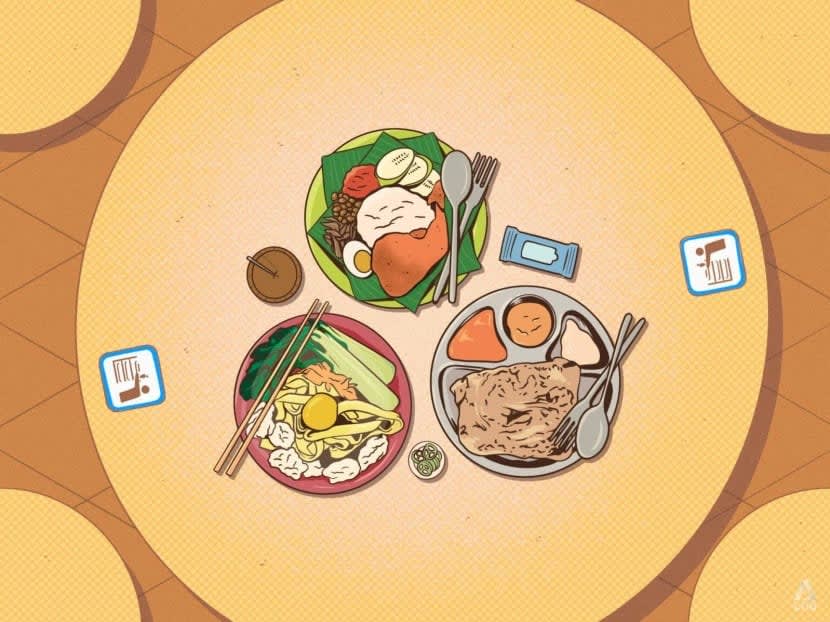Amid changing tastebuds and market realities, is there such a thing as authentic Singapore hawker food?
What Singapore diners might consider to be an "authentic" rendition of a hawker dish has really evolved with time, experts noted. After all, the original version of Hainanese chicken rice was never served with soy sauce, but this has become the norm today.

(Illustration: CNA/Nurjannah Suhaimi)
Hawker Don Goh’s daily grind starts at 5am each day at her hawker stall at Circuit Road Market and Food Centre.
Though her Don Don Prawn Noodles shop starts serving customers only from 11am, she has hours of preparation to undertake to perfect the prawn broth and pork ribs.
Ms Goh, 58, grinds the shells of fried red-leg prawns and adds them to soup stock, along with pork bones and ingredients such as carrots to lend a natural sweetness, as well as cuttlefish to enhance the broth’s flavour.
She and her partner then spend three to four hours crafting a special sauce to massage onto the pork ribs, which are steamed after that. They also stir-fry their own chilli, a spicy mix infused with ikan bilis and herbs such as lemongrass.
The meticulous process ensures that her customers get an “authentic” bowl of prawn noodles, courtesy of her great-grandmother’s traditional recipe, the stall owner said.
It is a point of pride for Ms Goh, the first in her family to be a hawker, who noted that not many hawker stalls today still offer the kind of “taste and feeling of the past” deeply tied to heirloom recipes.

Over at the Haig Road Putu Piring stall, Ms Nooraisha Hashim and her family continue to knead each piece of the round steamed rice cake by hand – just as her grandparents and great-grandparents had done since the 1930s.
The 41-year-old hawker believes that preserving authenticity in hawker food means relying on traditional cooking methods and handmade ingredients as far as possible.
“Once you add a machine (to the process), it is no longer authentic,” Ms Nooraisha said.
Her family still sticks closely to their traditional recipe of making the sweet snack, including spending three days just to process the rice flour, a key ingredient in putu piring.
The first two days are spent drying the flour, before it is sieved four times throughout the third day to achieve a very fine texture.
She tried to shorten this process to two days, but it “somehow did not taste as good”, she said.
Likewise, Mr Mujibur Rahman, 52, tries to uphold his family legacy of preparing traditional drinks such as teh tarik (hot milk tea).
Mr Rahman told CNA TODAY that his family has hawked these drinks for more than 50 years – first as street hawkers on Hock Lam Street, then at Capitol Shopping Centre, which temporarily housed food stalls in the 1970s.
Hock Lam Street, off North Bridge Road, was once a bustling eating spot before hawkers at the alley had to move to make way for urban renewal.
Mr Rahman's family business later moved to Hill Street Food Centre before ending up at Tekka Centre in Little India, where he now serves drinks and prata from Ar-Rahman Cafe.
For this third-generation hawker, a big part of preserving authenticity in his stall’s offerings lies in using “original” ingredients, as opposed to mass-produced and processed ones, and sticking closely to recipes that have been handed down over the generations.
For example, the stall still prepares its own gula melaka (palm sugar) syrup from scratch daily, for its signature iced chendol dessert. The syrup is then drizzled over a bed of pandan-flavoured green rice flour jelly, coconut milk and shaved ice.
They do not use any food colouring, artificial ingredients or preservatives in their preparation of the dessert, Mr Rahman said.





